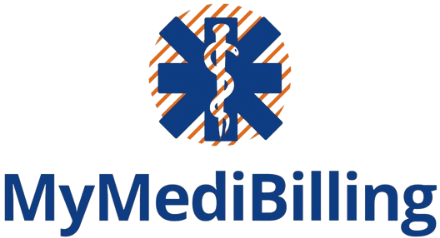Introduction
Patient registration and insurance verification are crucial steps in the revenue cycle process. It is essential to ensure that accurate patient information is collected, including demographic details, insurance coverage, and any relevant authorizations. This step sets the foundation for the entire revenue cycle, as any inaccuracies or omissions can lead to claim denials and delayed payments.
Utilizing electronic verification tools can streamline this process and reduce errors, ensuring that the correct insurance information is obtained and verified promptly. Furthermore, staff training and regular audits are essential to maintain the accuracy of patient registration and insurance verification. By implementing standardized procedures and conducting regular reviews, healthcare organizations can minimize errors and improve the overall efficiency of the revenue cycle.
Additionally, leveraging technology solutions such as automated eligibility checks can help identify any coverage issues upfront, allowing for proactive resolution before claims are submitted.
Key Takeaways
- Patient registration and insurance verification are crucial steps in ensuring a smooth revenue cycle process.
- Accurate and timely coding and charge capture are essential for maximizing revenue and minimizing claim denials.
- Claims submission and management require attention to detail and follow-up to ensure timely reimbursement.
- Effective denial management and appeals processes are necessary to address and resolve claim rejections.
- Payment posting and reconciliation are important for tracking and balancing incoming revenue.
Accurate and Timely Coding and Charge Capture
Accurate and timely coding and charge capture are critical components of a successful revenue cycle. Medical coding translates diagnoses, procedures, and services into universal alphanumeric codes, which are then used for billing and reimbursement purposes. It is imperative that coding is performed with precision to avoid claim denials and compliance issues.
Regular training and education for coding staff are essential to stay updated with the latest coding guidelines and ensure accuracy in code assignments. Moreover, charge capture involves capturing all billable services and procedures provided to patients. This process requires meticulous attention to detail to avoid underbilling or overbilling for services rendered.
Implementing automated charge capture systems can help streamline this process and reduce the risk of missed charges. Regular audits and reviews of coding and charge capture practices can identify any potential areas for improvement and ensure compliance with regulatory requirements. By prioritizing accuracy and timeliness in these areas, healthcare organizations can optimize their revenue cycle performance and minimize revenue leakage.
Claims Submission and Management
Claims submission and management play a pivotal role in the revenue cycle, as they directly impact the reimbursement process. Once services are provided to patients, accurate and timely claim submission is essential to initiate the reimbursement process from payers. This involves compiling all necessary documentation, including medical records and supporting documentation, to substantiate the services billed.
Utilizing electronic claim submission systems can expedite this process and reduce the risk of errors associated with manual submissions. Furthermore, efficient claims management involves tracking the status of submitted claims, identifying any rejections or denials, and taking proactive measures to address issues promptly. Regular follow-up on outstanding claims and timely resubmission of denied claims are crucial to minimize revenue cycle disruptions.
Implementing robust denial management workflows can help identify common denial trends and address underlying root causes to prevent recurring issues. By prioritizing effective claims submission and management practices, healthcare organizations can optimize their revenue cycle efficiency and accelerate reimbursement timelines.
Denial Management and Appeals
| Metrics | January | February | March |
|---|---|---|---|
| Denial Rate | 12% | 10% | 8% |
| Appeals Submitted | 50 | 45 | 55 |
| Appeals Success Rate | 60% | 55% | 65% |
Denial management and appeals are integral components of revenue cycle success, as they directly impact the financial health of healthcare organizations. Despite best efforts, claim denials are inevitable in the complex landscape of healthcare billing. Effective denial management involves categorizing denials, analyzing root causes, and implementing corrective actions to prevent future occurrences.
By leveraging data analytics and reporting tools, healthcare organizations can identify trends in denials and proactively address systemic issues contributing to claim rejections. Moreover, timely appeals of denied claims are essential to recoup rightful reimbursement for services rendered. This process requires thorough documentation and a clear understanding of payer-specific appeal requirements.
Healthcare organizations should establish streamlined appeal workflows and designate responsible staff members to oversee the appeals process. Additionally, tracking appeal outcomes and analyzing trends can provide valuable insights for continuous improvement in denial prevention strategies. By prioritizing proactive denial management and appeals processes, healthcare organizations can mitigate revenue loss and optimize their financial performance.
Payment Posting and Reconciliation
Payment posting and reconciliation are critical stages in the revenue cycle that ensure accurate recording of payments received from payers and patients. Upon receipt of remittance advice from payers, it is essential to reconcile payments with billed charges, contractual adjustments, and patient responsibilities. Automated payment posting systems can streamline this process by matching remittance advice with corresponding claims, reducing manual errors, and accelerating reconciliation timelines.
Furthermore, regular reconciliation of accounts receivable balances with posted payments is essential to identify any discrepancies or outstanding balances. This process involves a thorough review and resolution of any payment posting errors or discrepancies to maintain the integrity of financial records. Implementing robust reconciliation protocols and conducting regular audits can help identify any systemic issues impacting payment accuracy.
By prioritizing meticulous payment posting and reconciliation practices, healthcare organizations can ensure financial transparency and accuracy in their revenue cycle operations.
Patient Financial Counseling and Collections
Empowering Patients through Transparent Communication
Effective financial counseling involves open and honest communication with patients regarding their financial responsibilities, including insurance coverage, out-of-pocket costs, and available payment options. By providing clear explanations of billing statements and available assistance programs, healthcare organizations can empower patients to make informed decisions about their healthcare expenses.
Proactive Collections Strategies for Revenue Cycle Optimization
Moreover, proactive collections strategies are essential to minimize bad debt and improve overall revenue cycle performance. This involves establishing clear payment policies, offering flexible payment plans, and leveraging technology solutions for efficient collections workflows.
Enhancing Patient Engagement through Staff Training
Additionally, staff training in compassionate communication and financial counseling techniques can enhance patient engagement and willingness to fulfill their financial obligations. By prioritizing patient financial counseling and collections efforts, healthcare organizations can foster positive patient experiences while optimizing their revenue cycle outcomes.
Performance Monitoring and Continuous Improvement
Performance monitoring and continuous improvement are fundamental principles for achieving revenue cycle success in healthcare organizations. Regular monitoring of key performance indicators (KPIs) such as days in accounts receivable, denial rates, collection rates, and net revenue can provide valuable insights into the overall health of the revenue cycle. Utilizing data analytics tools to track KPIs and benchmark performance against industry standards can identify areas for improvement and inform strategic decision-making.
Furthermore, establishing a culture of continuous improvement involves soliciting feedback from staff members across various revenue cycle functions to identify process inefficiencies or bottlenecks. Implementing regular quality assurance reviews and performance evaluations can drive accountability and foster a culture of excellence within the revenue cycle team. patient registration Additionally, leveraging technology solutions for workflow automation and process optimization can enhance operational efficiency and streamline revenue cycle workflows.
By prioritizing performance monitoring and continuous improvement initiatives, healthcare organizations can adapt to evolving industry dynamics and achieve sustainable financial success.
Conclusion
A comprehensive checklist for revenue cycle success encompasses various interconnected components that require meticulous attention to detail, proactive management strategies, and a commitment to continuous improvement. By prioritizing patient registration and insurance verification, accurate coding and charge capture, efficient claims submission and management, proactive denial management and appeals, meticulous payment posting and reconciliation effective patient financial counseling, and collections, as well as performance monitoring and continuous improvement efforts, healthcare organizations can optimize their revenue cycle performance while ensuring financial sustainability in an increasingly complex healthcare landscape.


